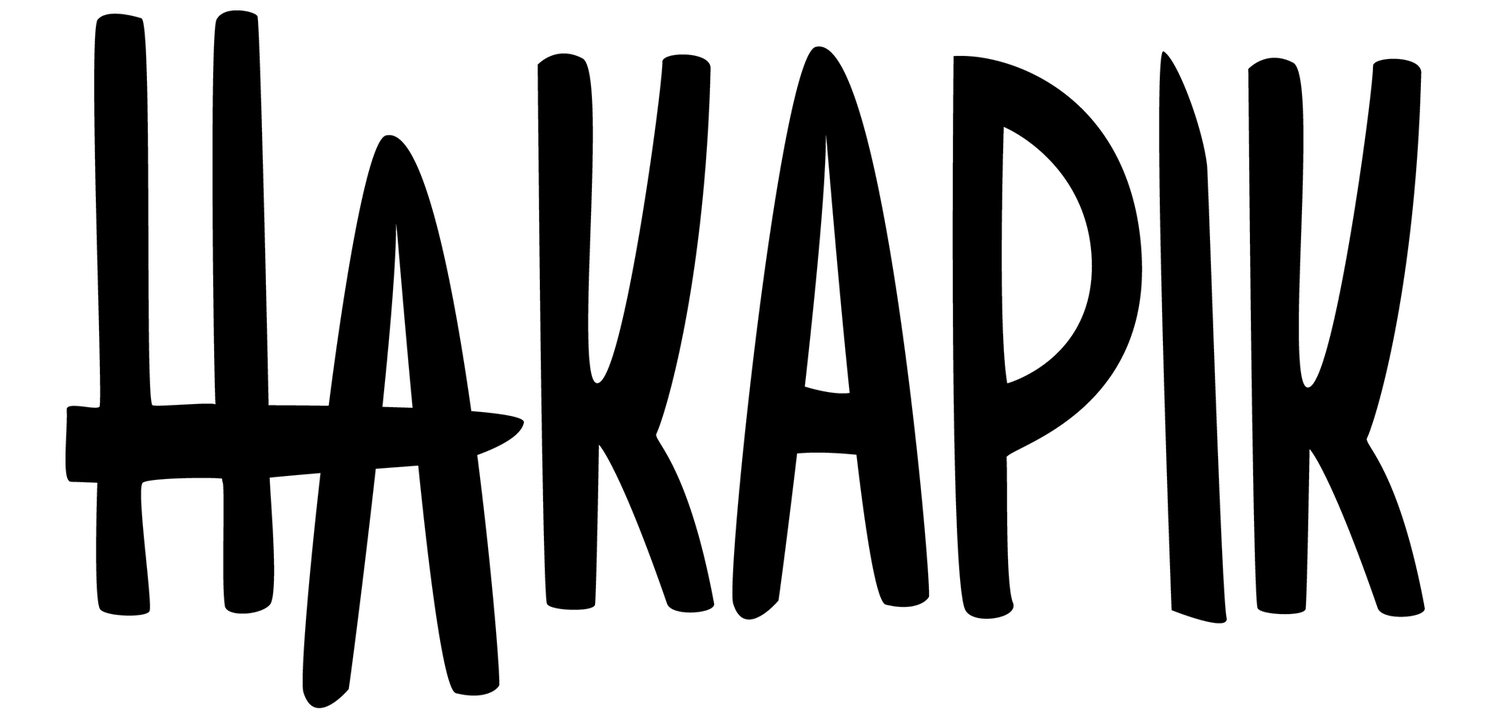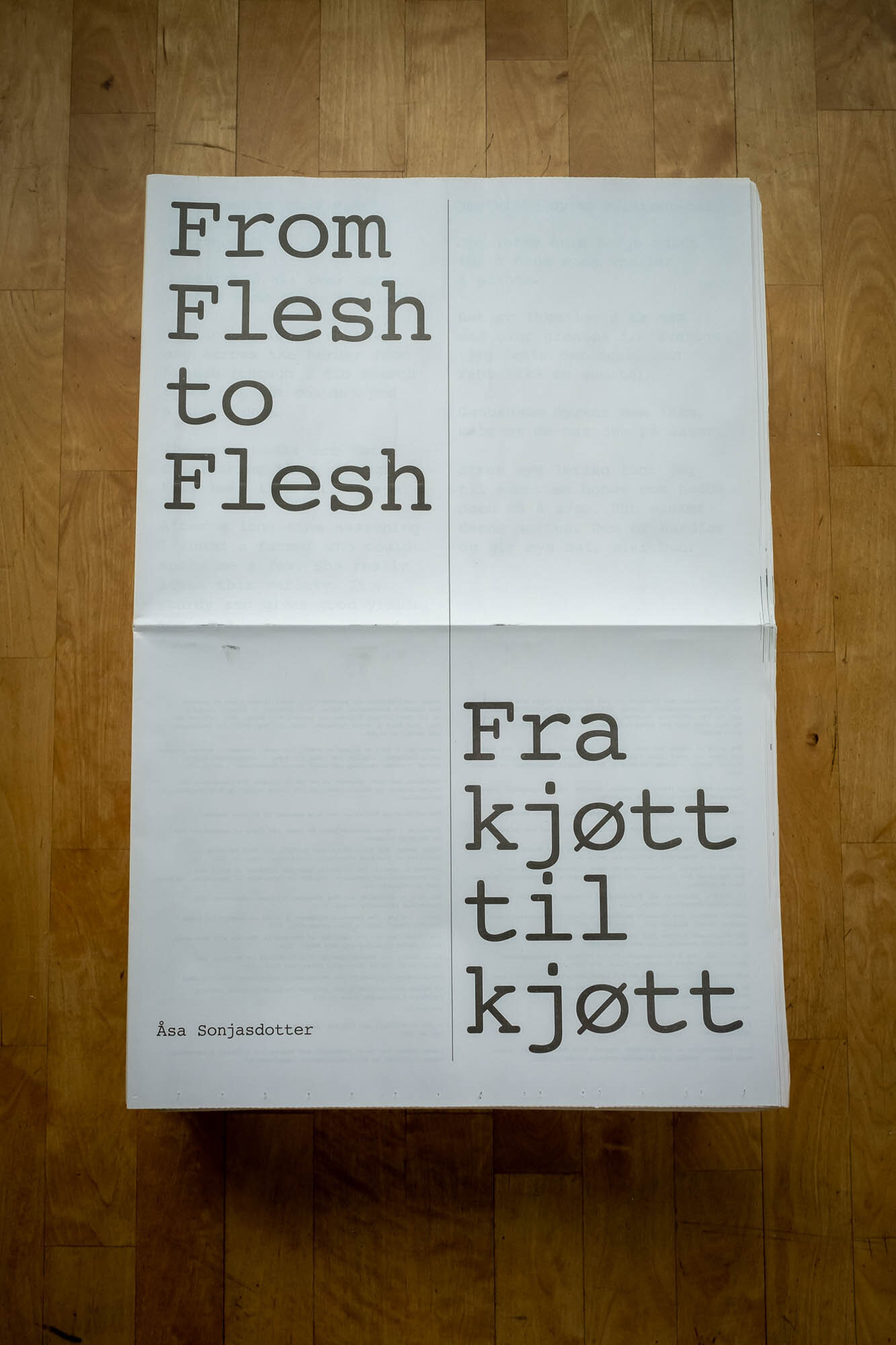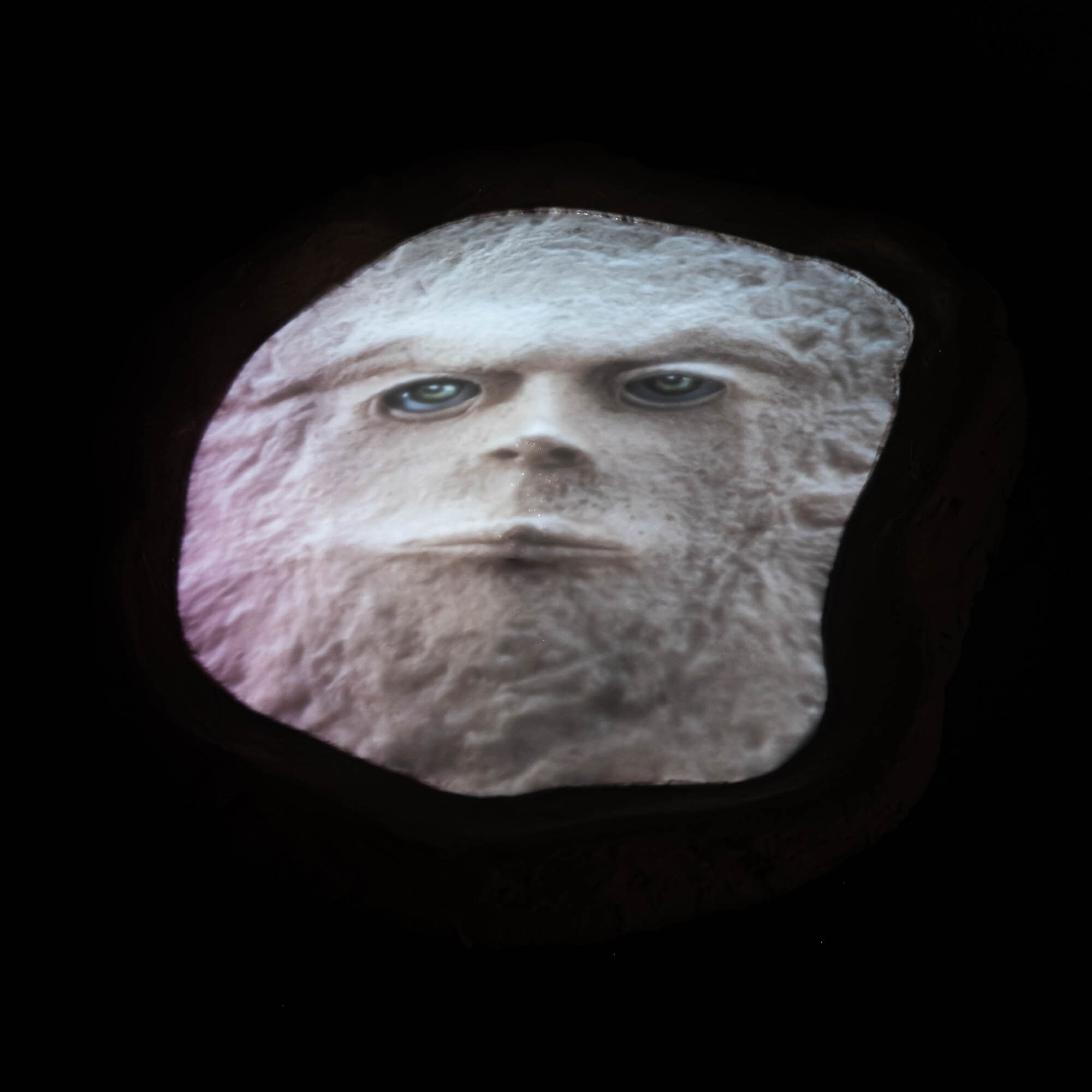FROM THE GUT TO OUTER SPACE
Review of the exhibition I Am a Multitude (Jeg er mangfoldig), part of the Arctic Arts Festival (Festspillene i Nord-Norge), produced by Se Kunst i Nord-Norge, Harstad, June 19th - July 25th 2021.
Written by Bianca Hisse
Smells, bacteria, extra-terrestrial life, and plant cyborgs are only a few of the many intriguing existences in The Arctic Arts Festival exhibition, I am a Multitude, digging into various common strategies of being in and with nature.
Curated by Karolin Tampere and Torill Østby Haaland, the exhibition includes a selection of artists across generations and geographies – from emerging to established, from the Norwegian to the international art scene – filling the rooms of Galleri Nord-Norge with more than thirty works.
Dissolved lines
The series of brown dog sculptures which compose Inghild Karlsen’s De rødøyde hundene (1995), are spread around the exhibition space – slightly stretching the borders between the natural and the artificial. With a confident posture, they seem to be guarding Jana Winderen’s sound installation Spring Bloom in the Marginal Ice Zone (2017) on the ground floor, while their red eyes convey a certain vigilant feeling. They transmit an ambiguous appearance, being almost a hybrid between dogs and surveillance devices.
Not only the notion of nature is twisted and expanded, but several lines are erased in I am a Multitude. The lines between body and environment, body and mind, dead and living matter are systematically dissolved in every single work. In this sense, I felt particularly attached to Åsa Sonjasdotter’s journal piece From flesh to flesh (2017), and how her personal narrative of researching the ‘kjøttpotet’ (Meatpotato) unfolds into a complex socio-political situation.
In the newspaper, she describes how an almost extinct type of potato is closely linked to population growth, production of guns and nitrogen fertilizers. She also presents a real possibility for more sustainable food production by use of human excrements. Her journal is not only highly informative but also a proof of how we cannot think of nature, culture and politics as separate entities. As I walk through the exhibition, the question raised in Sonjasdotter’s journal stays with me: Can we stay calm on Planet Earth?
Similarly, in Måsekasse (2015) by Camilla Renate Nicolaisen, the artist instructs us how to provide nesting to seagulls in exchange for getting their eggs for consumption. Both Nicolaisen and Sonjasdotter’s pieces point to how we can collaborate and benefit from natural cycles of non-human beings without endangering them.
Bridging the gut and outer space
The exhibition also includes a film program divided in three different parts and eleven films. In Jenna Sutela’s Holobiont (2018), the nattō bacterium is the bridge between the gut and outer space, for its fundamental role in a famous Japanese dish, and also its ability to survive outside Earth. I connected the idea that our own bodies accommodate potential extra-terrestrial existence with Viktor Pedersen’s digital animation video, which lends its Norwegian title to the exhibition. With its overlapping abstract forms floating on a black background, the images in his Jeg er mangfoldig (2020) are somehow evocative of a travel through outer space, while it actually consists of bacteria samples taken from the artist’s body.
In the festival exhibition, the concept of multitude often appears in close connection to theories of more-than-human intelligences and the criticism to anthropocentrism. In Pedersen’s Jeg er mangfoldig, for example, I perceive multitude as opposed to the notion of ‘mass’: a heterogeneous set of singularities, an open game of relationships, a co-existence of micro conflicts. His narrated text, heard throughout the film, evokes this exact character, since what constitutes a ‘human body’ in his work is precisely the collective manifestation of various beings.
Imagined narratives
Outside of Galleri Nord-Norge, the exhibition continued with The Bone (2019-2021), a virtual reality experience by Michelle-Marie Letelier. The work was installed in the hall of UiT campus Harstad, where several other events were taking place simultaneously. Inside a small boat, the viewer dives into the inner world of a farmed and a wild salmon. I believe Letelier’s piece would have benefited from a more silent environment, as the circulation of people and noise in the surroundings interfered in the concentration needed to fully experience the impressive visuals and the accompanying sound work by Ánde Somby. Letelier’s film Outline for the Bonding (2017-2019), also part of the film program, gave me a deeper view on the contrasts between the industrialized approach towards salmon farming and the importance of indigenous knowledge on nature.
While in The Bone we hear the consciousness of salmon, in Mercedes Mühleisen’s The Pond’s Crust (2019) we see a pond gaining a facial feature and talking to us. Also in The Great Silence (2014) by Allora & Calzadilla, the subtitles are written from a parrot’s perspective. This artistic strategy, of giving voice to non-human beings by means of fabulation, reveals a tendency that is indicative of a collective effort to establish less hierarchical relationships within our environments.
From the microscopic to the universal, I am a multitude shows us that the world does not unfold in a straight line, but rather in a multiplicity of – often complex, turbulent and contradictory – directions. It succeeds in opening space for unexpected associations, as well as in bringing together a unique group of artists who are in tune with today’s most urgent topics.


















